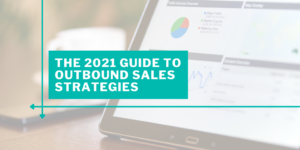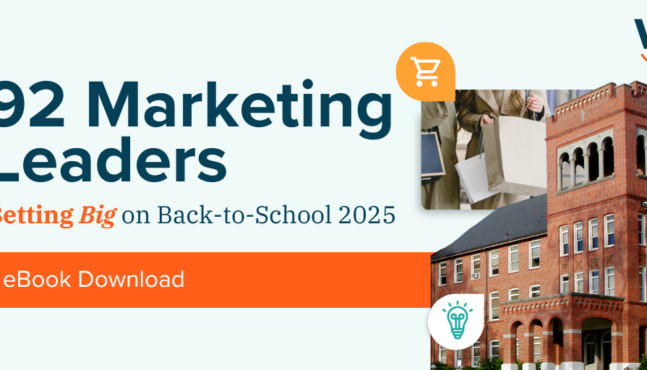
The 2021 Guide to Outbound Sales Strategies
Hot take – marketers are much more focused on inbound sales and promotion strategies than outbound sales. And why shouldn’t they be? Sales prospecting is harder because the balance of power always tips in favor of leads and prospects. However, outbound sales techniques are still powerful tools for business development, especially for growing companies.
The key components of an effective outbound sales strategy include:
- Building accurate prospecting contact lists in target verticals.
- Strategic development and execution of repeatable sales processes to reach decision-makers
Get more success out of your outbound campaigns with these five tips:
1) Set times, goals, and resources
Inbound campaigns have a little more leeway because they are designed more for brand-building and lead creation over a long period of time. Ideally, the goal of outbound marketing is to drive more immediate results, which does require some heavy lifting during the initial documentation period. You need to create start dates, end dates, and specific goals.
Perhaps most importantly of all, you need to develop the right resources to draw from. There are a lot of horrible cold-call customer lists out there: As a general rule, never buy lists or use old customer emails. Every year, that data degrades 70 percent so you’ll just waste time. Start fresh, by either investing in business development tools or collecting new prospecting data on your own.
“We teach our clients to get proven outbound sales resources in place, take whatever time they have, and be proactive. Don’t shortcut revenue-driving resources and call it an unneeded expense. Revisiting outbound strategies down the road just adds more pressure and we see businesses fail way too often by adopting a passive outbound mindset. It’s frustrating to watch business owners dismiss their challenges because they are floating on highs. It always leads to losses and regrets.”
Jeff Haley, Winmo Director of Sales
“I’m big on passive and dynamic time-blocking. Passive time-blocking dedicates blocks of time to tasks you have to do daily like prospecting, email follow-ups, or phone calls. Dynamic time-blocking adds important pieces you want to get done outside of your daily tasks, like sales training, personal development, or skill development.”
Will Gordon, Winmo Account Executive
2) Focus on lead generation and response
What do you want your customer to do? Do you want them to buy a particular product, visit your store, join a loyalty program, create referrals, or increase profit for a particular quarter? Focus on creating leads around this goal. This sort of clarification and planning is invaluable for your data analytics. Lead conversions, click-throughs, time to close, call to close… there’s a lot of metrics to mess with and you need to find those that most closely connect with your campaign for success.
“Consider the best channel for the type of ask. Statistically, weak asks like, Would you like to learn more? are better suited for email. Strong asks like, Can we book a meeting? are better suited for a phone call. Think about it — if information and awareness are all you have, why waste their time over a phone call? It makes sense for them to have the power to go back and review that information. If you want to book a meeting, why leave it in the hands of an email to be ignored when you can get an immediate answer from a two-minute phone call?”
Will Gordon, Winmo Account Executive
3) Relearn communication skills
Outbound sales require a different type of communication from inbound marketing. This approach is reliant on skillful sales pitching and persuasion. If your business development team doesn’t have a traditional sales background, invest in sales coaching and training seminars to maximize productivity and effectiveness. Ineffective follow-up is one of the main reasons prospects cool down or disappear altogether.
“Today, buyers are inundated with generic, thoughtless cold emails. Mention something you noticed about them, not just the company they work for. This could be a recent LinkedIn post they published or an article they were quoted in. Then, show that you understand their business. Ask a question that makes them think and piques their curiosity. Sales intelligence tools, like Winmo, are incredibly helpful for understanding your prospects’ priorities and spending timelines. Most importantly, don’t be afraid to get a little creative.”
Ryan Wilkie, Winmo VP of Sales
4) Know who (and where) your customers are
If all this talk about automation and sales training makes you nervous, focus on marketing first. Successful outbound sales and marketing begins by identifying exactly who you hope to reach and what they’re doing now. Not in a creepy stalker way, but with the right message. Meet your prospects where they are to drive new business growth.
“Know who your prospects are and what problems they solve in the market. Successful salespeople quickly identify who their products or services help and who they can’t. Remember, stop wasting time trying to fit a square peg into a round hole.”
Jared Smith, Winmo Senior Director of Sales, Agency
“Understand your ideal customer profile. And not just as a company, but the individuals that make up that company. They all have different priorities and pains. How does your product or service address their needs? Ask questions or make educated inferences and explain how other customers are succeeding.”
Justin Voss, Winmo Account Executive
5) Don’t be afraid of hybrid content
Finally, outbound and inbound marketing don’t need to be entirely separate. The right calls to action can create valuable leads from all types of content. Content can also help shift lead creation it from an inbound focus to an outbound project. Let the two types of marketing feed off each other as often as possible to avoid duplicate efforts.
“For me, there must be a shift when you approach an outbound project. With inbound, you can get away with automation, because there’s already a level of interest. To blend your outbound and inbound efforts, the focus has to shift to make your content relevant and actionable. Outbound stays informational, so lead turn themselves into inbound opportunities.”
Will Gordon, Winmo Account Executive




